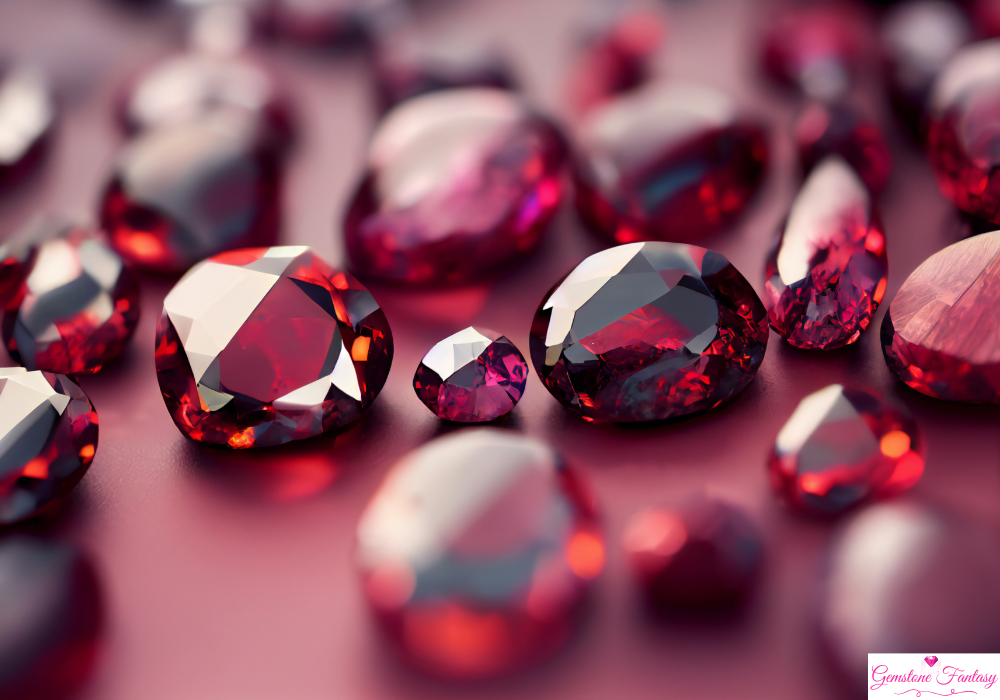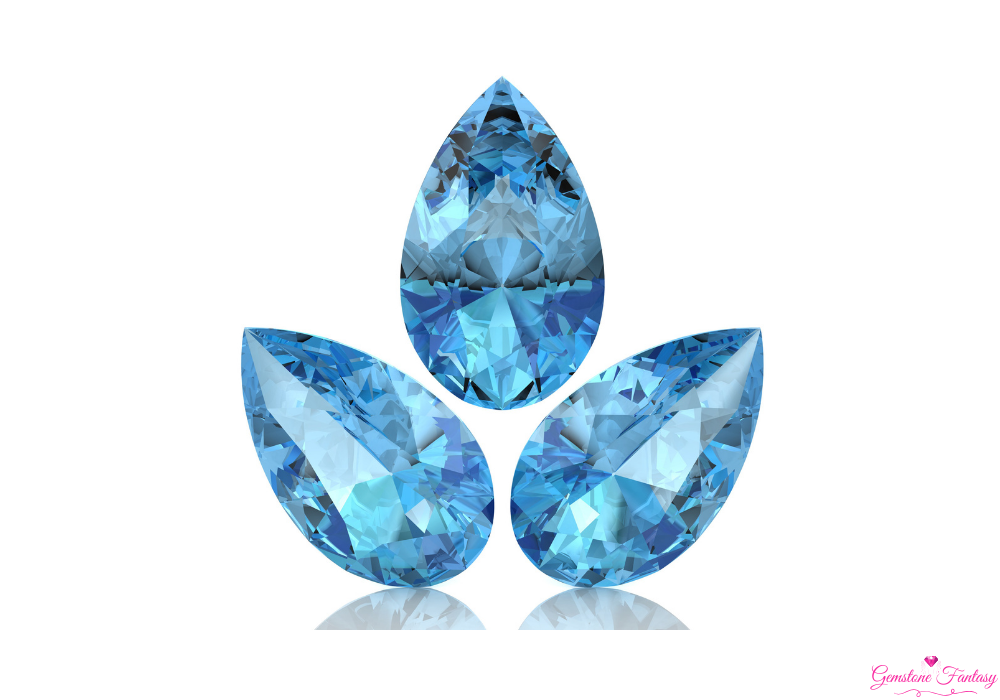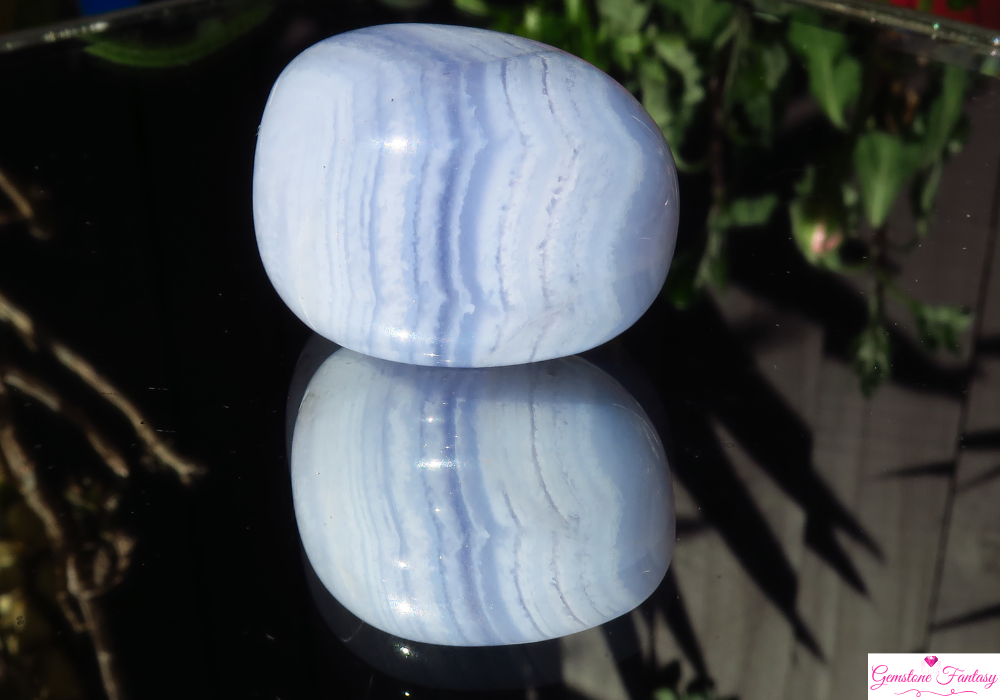Birthstones have long held significance across various cultures, symbolizing attributes such as strength, love, and wisdom. Today, birthstones remain popular as jewelry, personal tokens, and gifts, carrying stories and histories that make them unique. Here’s a closer look at each month’s birthstone, its traditional meanings, and some historical context surrounding these fascinating gems.
January: Garnet

Garnet, a stone primarily recognized for its deep red color, is the birthstone for January. However, garnet can also be found in shades of green, orange, and pink. Historically, garnet was considered a talisman for travelers, as it was believed to protect them during their journeys. In ancient times, garnets were worn as protection against injury and used as symbols of perseverance and trust. They are thought to encourage stability, grounding, and confidence, qualities that align with those born at the beginning of the year. Garnet’s strong hues are often associated with the heart, making it a symbol of love, commitment, and friendship.
February: Amethyst

The amethyst, a variety of quartz distinguished by its shades of purple, is the birthstone for February. In ancient Greece, amethysts were believed to have the power to prevent intoxication, helping individuals maintain clear thinking and strong focus. In fact, the word “amethyst” comes from the Greek word “amethystos,” meaning “not intoxicated.” Due to its calming colors, amethyst is often seen as a stone for peace, wisdom, and balance. Its purple tones are sometimes associated with intuition and spirituality, with people wearing it to feel more connected and balanced emotionally. This stone is also admired for its beauty and is a common choice for jewelry today.
March: Aquamarine

Aquamarine, the stone for March, ranges from pale blue to deep blue and is often associated with tranquility, courage, and clear communication. Ancient Romans saw it as a symbol of the ocean and carried it as a protective talisman on sea voyages. Its name is derived from the Latin words for “water” and “sea,” and its color and clarity evoke the serene qualities of the ocean. The stone is thought to encourage honest communication and peace of mind, making it a popular choice for those looking for calm and self-reflection. Aquamarine’s cool blue hues also make it a favored choice for jewelry.
April: Diamond

Diamond, the birthstone for April, has been celebrated for centuries due to its strength, resilience, and unmatched brilliance. Known as one of the hardest natural materials, diamonds have historically symbolized endurance, love, and loyalty. Ancient cultures believed that diamonds offered protection and brought courage, with warriors even wearing them into battle. Today, diamonds are a widely popular choice for engagement rings, often symbolizing unbreakable bonds and lasting relationships. The brilliance and clarity of diamonds also make them an emblem of purity and strength.
May: Emerald

Emerald, with its deep green hues, represents May and is admired for its vibrant color and associations with growth and renewal. Cleopatra, a famed admirer of emeralds, considered it a gem of beauty, fertility, and power. The green color of emeralds is often associated with springtime and nature, symbolizing growth, prosperity, and health. Emeralds have also been linked with mental clarity and insight, making them an ideal choice for those seeking wisdom. The stone is also sometimes associated with loyalty and patience, qualities that align well with the steady and refreshing energy of spring.
June: Pearl

Unlike other gemstones that form within the Earth, pearls are created within oysters, giving them a connection to the water and moon. Often symbolizing innocence, loyalty, and serenity, pearls have been admired since ancient times for their purity and natural beauty. The legend of the pearl forming from a dewdrop that fell into the ocean and was then embraced by an oyster adds to its mystique. Historically, pearls have been seen as emblems of calm and purity, and they continue to be a favored choice for occasions like weddings. Pearls are thought to inspire introspection and calm, making them a timeless and versatile choice in jewelry.
July: Ruby

Ruby, the birthstone for July, is known for its vibrant red color and has often been associated with passion, vitality, and strength. Often referred to as the “king of gems,” rubies have been prized by royalty and warriors alike. Many believed that wearing a ruby provided protection and energy, aligning with its fiery red hue. The ruby’s bold color and connection to the heart have made it a symbol of love and adventure. Rubies continue to be a popular choice for jewelry, especially for those who want a stone that captures intense emotions and embodies resilience.
August: Peridot

The olive-green peridot is August’s birthstone. Its history goes back to ancient Egypt, where it was known as the “gem of the sun” and associated with healing and protection. Peridot is often found in volcanic rocks and has been connected to notions of renewal, energy, and growth. This gemstone is sometimes associated with ridding oneself of negativity and promoting restful sleep. Peridot’s color, reminiscent of fresh greenery, represents renewal and vitality, making it a favored gem for people seeking balance and rejuvenation.
September: Blue Sapphire

Blue Sapphire, primarily recognized for its deep blue hue, is September’s birthstone. Known as a symbol of wisdom, purity, and spiritual insight, sapphires were often worn by royalty and clergy as a protective stone. Some believed that sapphires offered protection from envy and harm, and the stone has been associated with mental clarity and emotional balance. The name sapphire comes from the Greek word “sappheiros,” meaning “blue stone,” and it is frequently chosen by those looking for focus and serenity in their lives. Sapphire’s timeless appeal makes it a sought-after gemstone in jewelry, especially for its beauty and symbolism.
October: Opal

Opal, with its iridescent play of color, is the birthstone for October. Romans admired opals for their shifting colors, considering them symbols of hope and good fortune. Opal’s multicolored flashes make it a unique stone often associated with creativity and imagination. Its milky background interspersed with rainbow-like hues makes opal a popular choice among those looking for originality and expression. Its connection to change and unpredictability has led to its association with creativity and artistic inspiration.
November: Topaz

Topaz, the birthstone for November, is often found in warm yellow shades, though it comes in other colors as well. Ancient Egyptians valued topaz, associating it with the sun’s energy. People have connected topaz with strength, clarity, and positivity, and it has been thought to offer relief from stress and to promote relaxation. Its golden hues make it a popular choice in jewelry, especially for autumn. Topaz is also linked to joy and self-assurance, making it a stone that many consider uplifting.
December: Turquoise

Turquoise, December’s birthstone, is known for its blue-green color and has been valued for centuries, especially in Native American cultures. Often connected with ideas of friendship and protection, turquoise has been used in ceremonial jewelry and talismans. Its earthy tones and soft colors make it a unique and versatile gemstone, and its reputation as a balancing and grounding stone has kept it popular over time. The blue-green color is often linked to peace and balance, symbolizing open communication and genuine friendships.
Embrace the Beauty of Birthstones
Each birthstone, from garnet in January to turquoise in December, brings with it a rich background of history, culture, and unique associations. Whether worn as a personal reminder or a gift, birthstones capture the beauty and significance of the months they represent, offering a special touch of personal meaning and connection to nature’s treasures.













